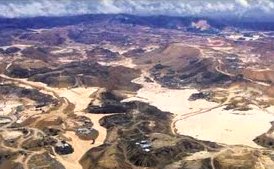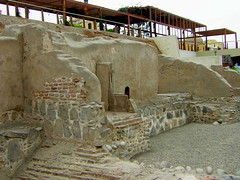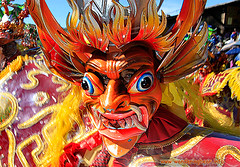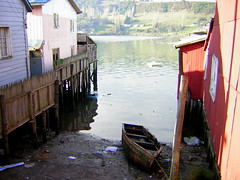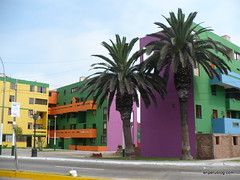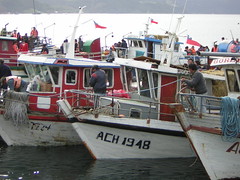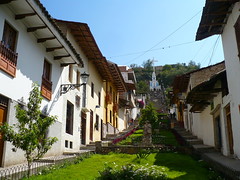Casa de Osambela-Oquendo
This mansion in the colonial heart of Lima is as beautiful as it is unique. In its 200 year history it has seen two wealthy owners come and go, leaving it with two names. I happened to be passing by when Lizardo Retes, who takes care of the site that is now a cultural centre, offered to show me around – and to the roof where you can see as far as Callao.
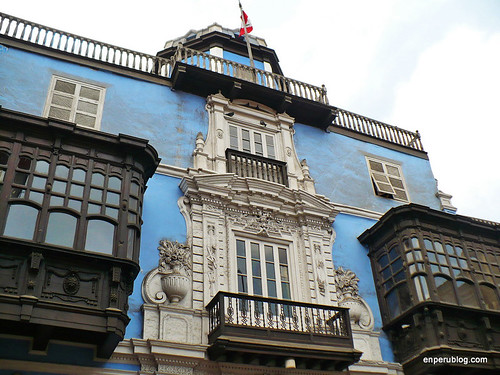
Casa de Osambela-Oquendo
This beautiful building with its typical Limeño balconies is unique. It was, other than the steeples of the nearby churches and cathedral, the tallest construction in Lima – a full three floors plus a watch tower on top. No other residential building or mansion in the early 1800s or before could boast the same.
The building had two owners, and its first was the man who commissioned its construction.
Founder
Don Martín de Osambela lived in the house from the time of its construction in 1808 until 1823 when as a Spaniard loyal to Spain he was forced out at the hands of republicans at the declaration of Peruvian independence. Don Martín was born in 1754 in Navarra, Spain, before moving his entire wealth to Lima after some misunderstanding with the Spanish Royal family. He set up a number of businesses in the capital of the Spanish Empire and became wealthier still, sending money home to Spain to fight Napoleon and to Buenos Aires to fight the British.
The British attempt to capture Buenos Aires, and their defeat by ordinary citizens with no help from Spain, eventually lead to an independence movement headed by San Martín. After achieving independence from Spain for his country, and Chile, he headed north towards Lima.
Don Martín de Osambela was involved in the Spanish fight against the revolutionaries, donating vast sums of money to the Spanish cause. But it was in vein. San Martín was soon standing just metres from the mansion of Don Martín proclaiming Peruvian independence to a crowd of cheering creoles.
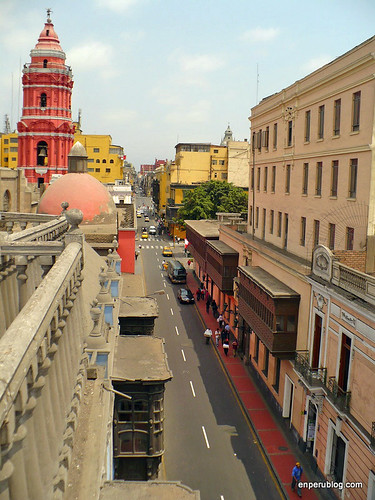
Just a short distance to the Plaza
Most elite Spaniards in the city of Lima swiftly switched allegiances and co-signed the declaration of independence, but Don Martín did not. He did however meet with San Martín, invited him into his home and even donated his personal library to the newly formed republic as a good will gesture. These books formed the basis of the new Biblioteca Nacional. As San Martín left to meet with Bolivar in Guayaquil, a wave of anti-Spanish sentiment swept the city. Many of those born in Spain found themselves without property or titles, these being confiscated.
Don Martín de Osambela was forced to rent out his house at a low price to Peruvians in order for he and his family to be allow to keep it. He could not longer run a business in Lima, and the rent was the only income he had.
Things eventually got so bad that in 1825 he fled the 14km to Callao, where the fort there was still controlled by the Spanish – the only part of Peru where they had not been pushed out. Here he and a great number of other Spanish hold-outs died of scurvy before the Spanish commander Ramón Rodil surrendered.
Despite his services and loyalty to Spain, his disagreements with the royals decades earlier had not been forgotten, and no grand recognition was awarded. He did however receive minor honours from lower authorities.
New owner
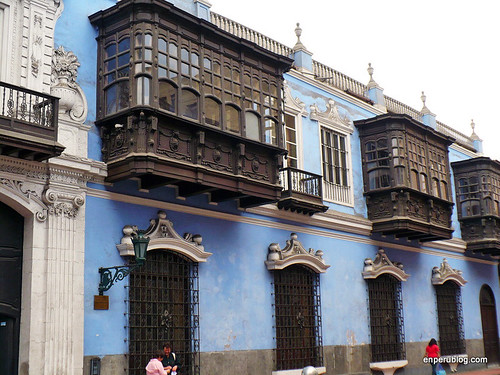
Balconies
His widow and children eventually returned to the house, but ended up selling it to lawyer named José de Oquendo… who on his death in 1854 left it to his two daughters María Rebeca and María Sara.
Both daughters lived most of their early lives in Paris, where María Sara married and stayed, becoming a famous writer. María Rebeca married a Chilean, returned to South America, eventually split with her husband and returned to Lima, to the home still known as the Casa de Osambela.
María Rebeca, part of high society both in Lima and Paris, eventually became a painter, for which she received a fair amount of recognition. Her work was exhibited in Paris in 1874 and 1878. From her husband she duplicated her already impressive wealth and used part of it to restore her colonial homes in Viña del Mar, Chorrillos and of course Lima.
She adored her son Enmanuel, blinding herself to the life he led in Paris as a millionaire playboy. He would return to Lima each year under the pretext of a visit, but he was really only interested in more money to fund his lifestyle. Eventually he had spent her entire fortune, and she had to open an art school for women in her home to support herself. Seeing that his mother had no more money, Enmanuel commited suicide in Paris in 1932.
Eventually María Rebeca became extremely poor, so much so that she lost her historic home to the bank. After begging to the bank for pity, she was allowed to stay rent free in what was once her home until she died in poverty in 1941.
Building
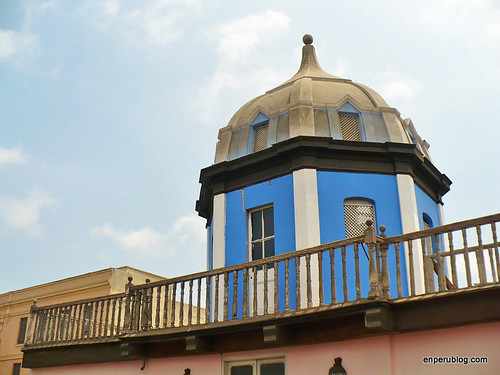
Watch tower
The house is typical in that it centres around a courtyard with rooms, about 40, wrapping around and over looking it from all four sides.
What is unique though is its height. All other homes in Lima were two floors high, with the windows on the second floor decorated with beautiful traditional balconies.
The house of Don Martín though had three floors. And on top of the third is a small watch tower, used by the wealthy merchant to look beyond all of Lima’s buildings, over the 14km of countryside that then separated Lima with its port of Callao, to see the ocean and his boats arriving.
Today, to my great surprise, through a gap between buildings, you can still see the sea and several huge ships anchored off the coast.
See for yourself
The house is on Jirón Conde de Superunda, number 298, on the street that leads to the plaza. Standing opposite of the Presidential Palace, on the other side of the plaza facing it, turn to your left and head straight down the street. Ask Lizardo if you can see the view from the roof. Also, be sure to see the library and its almost 500 year old books.
Tags: 1800s, 1900s, balconies, british, buenos aires, callao, colonial, independence, lima, national library, san martin, spaniards



